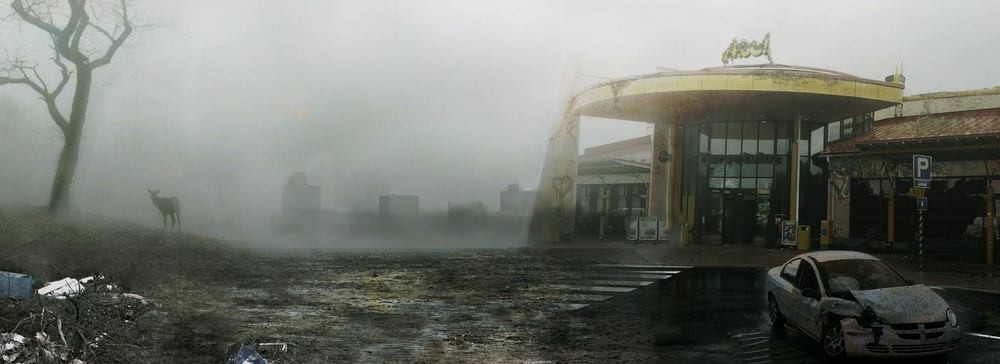Marras is set in post-apocalyptic Finland less than a year after the world has been devastated by a global pandemic. The virus epidemic started in July 2016 and by the end of the year it had wiped out more than 99% of the world’s population. This is the story of the few survivors.
The Pandemic
First news of the new virus broke public in late July 2016. At that time there was already a small epidemic ongoing in Chinese province of Guangzhou, and cases detected at least in Baltimore and in southern Spain. Apparently the patient zero, a Chinese businessman had died already in May, but the case had been kept concealed. The new virus caused severe pneumonia-like disease, and was first suspected to be a variant of SARS coronavirus or bird influenza. In the beginning of pandemic, the majority of the patients died from pneumonia. In August, news of promising increase in pneumonia survival rate was announced, just to see the patients relapsing into hemorrhagic fever in matter of few days of initial improvement.
The virus was successfully isolated from an Indian patient, and was found to be a member of the same Filoviridae virus family as Ebolavirus. The virus was supposedly a new variant of Cuevavirus, which is found in cave bats in Spain, France and Portugal, and was previously thought to be non-pathogenic in humans. WHO epidemiologists tracked the epidemics to the Chinese businessman, who had participated in a tourist trip in Lloviu cave in Spain on 1st of May. Some claims were made on the use of cave bat parts in some traditional medicine in Guangzhou, which was thought to explain the fast spread of the virus in China. These claims were, however, never confirmed.
During August the cases were detected in all continents. When countries including Finland started closing their borders in late August it was quite obvious that it was already too late. The virus had spread to every corner of the world. Unlike its relatives, Ebolavirus and Marburg virus, this virus seemed to be contagious already during the asymptomatic latency period, and had its offspring planted all around the world already in June, when the global population was still unaware of the new threat.
The virus got soon name “Chinese Ebola” in everyday speech. The news, as long as they were still running stuck to name “PAHA” (Pneumonia-Associated Hemorragia variant Asia), which also gained popularity in everyday use in Finland. The first case in Finland was announced 14th of August, and the first victims were cremated August 21st, only a week after WHO had declared a global state of emergency. The treatment of the disease was mainly just alleviating the pain. Even intensive care was not much good. The estimates of survival rate from the disease were below 1 %.
In September there was first slow, but then exponential increase in death cases in Finland towards the end of the month. In late September national defence forces were called for crisis management tasks. Growing number of doctors were ordered to immediate pandemic control duties. News from the world told harsh story about the spread of the pandemic in big cities and towards the end of the September people started to leave cities to go to summer cottages, relatives or wherever they could find refuge. Especially after the so-called black Thursday on September 22nd, the fleeing from cities escalated. This was the first day of mass burials in Finland, the morgues of the big hospitals were emptied and a lot of fresh bodies were carried out straight from hospital beads. On this day, even the last optimists started to realise how serious the situation was. Roads leaving Helsinki and other big cities were packed full after the news broke open. Queues to ferry boat to Nauvo island were hours long, just as in the wait of Midsummer eve. Quite soon it turned out that that the citizens of Nauvo had taken their own initiative and closed the island from mainland traffic.
During October plundering and robbery started to get out of hands. It became also more and more clear that there was no speaking of taking care of the sick anymore. The quarantine regions started to lose effect fast as the quarantine keepers started to drop off one by one. During November the hospitals and any attempts of quarantine regions were basically abandoned. Rumour was that there were few virus-free “islands” still inside some cities.
If you were injured and you had something to exchange you might find a small clinic running on stolen equipment to take care of the wounds. The word was that some dedicated souls kept Yleisradio broadcasts ongoing the whole autumn. News were broadcasted every evening at nine. In late November the broadcasts changed into mere automatic instructions for pandemics safety measures, which kept going for a month, before the radio silence.
—
At the time of the game the understanding of most of the people is that the vast majority of global population has perished. There probably are other small groups such as ours, but it’s hard to say how many. It’s not quite clear that the risk of PAHA virus would be past. Some of the survivors are the rare ones recovered from the disease. Others are just lucky escapees, who never got in contact with the virus. It seems that the immune survivors are not carriers of the virus, thus the only source of the potential virus spread would be from a sick patient or contaminated material. Encounters with other people are extremely rare these days. If you went looting around, you might have seen somebody in the cities, but in the countryside you don’t really see anybody.
Language Switcher
- English (UK)
- English (United States)
- Suomi
Language Switcher
- English (UK)
- English (United States)
- Suomi
